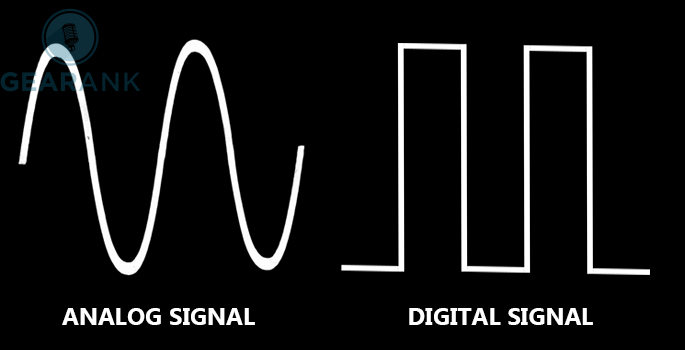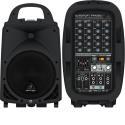
Digital Signal Processors (DSP) are essential tools in audio production, used to shape and manipulate audio signals.
An audio signal is analog in its purest form, but once converted into digital, it can be processed and edited in incredible ways.
This article will explore the basics of what DSPs are and what they do.
- DSP Meaning: Digital Signal Processing in Music
- How Does Digital Audio Processing Work?
- What are Some Examples of DSP Functions?
- Why is a Digital Signal Processor Important?
By the end of this article, you will better understand what DSP is and how it is essential in audio production.
DSP Meaning – Digital Signal Processing in Audio
Digital Signal Processing (DSP) in music refers to the manipulation of audio signals using digital means. This technology uses complex mathematical functions and algorithms when processing signals.
But before you can benefit from DSP algorithms, analog audio signals must first be converted into digital signals. Now let’s breakdown some terms:

- Signals: Generally, signals carry information. In audio, this can be the sound of your voice or the instrument you’re playing. Such information is then sent to an audio device to be processed, interpreted, or transformed into a different form.
- Analog Signals: Think of the analog frequency signal as a smooth, continuous flow of information. This analog form accurately represents the original signal but can be more susceptible to interference.
- Digital Signals: This is like a series of on-and-off pulses, represented by the numbers 0 and 1. It has a finite set of values, making it less prone to interference and more importantly, easier to manipulate. However, it may compromise a bit on sound quality.
So, in simpler terms, DSP in music uses fancy math to tweak the sounds you hear, but it all starts with turning regular sound into a digital language that a computer can understand and manipulate.
How Does Digital Audio Processing Work?
For DSP to perform its task, it needs assistance from two components: the ADC and DAC. These two are responsible for the capture and playback of an audio signal.

- ADC Sampling: First, you have the analog signal from the source (vocals or instrument). It then goes through an analog-to-digital converter (ADC).
An analog-to-digital converter converts the analog sound waves into digital bits (kbps). The higher the sample rate, the higher the quality of the sound you’ll get.
- DSP Processing: After converting the signal into digital format, the next step is audio processing. This is done by DSP Chips. At this stage, the data is manipulated to achieve the desired audio effects. It can be a digital reproduction of popular analog audio gear, or it can also be effects such as filtering, EQ, modulation, time-based effects like delay and reverb, and more. This is achieved via complex algorithms and fourier transform.
- DAC Conversion: For us to hear the processed audio, the digital signals have to be converted back to analog. This is done by a digital-to-analog converter.
What are Some Examples of DSP Functions?
The goal of DSP use in audio is sound quality improvement. And the most common use of this tech is to replicate how tried and tested analog components improve sound.
A good example is “Amp Modeling,” where digital signal processing is used to mimic the sound of popular American and British tube amps. This technology gave guitarists access to different tube amp voicings without swapping out their amps. In its infancy, DSP sound quality was less desirable to professionals, but these days, even critics are impressed with its accuracy, finding it hard to differentiate between a real amp and a modeled amp in a blind test.
Sound quality has improved so much that many professionals can now leave their bulky analog / tube gear in their home studios and just bring DSP-based processors for live performances. Modern amp modelers sound really close to the amps they’re mimicking, some can even “profile” your existing amp on the fly and save it as a preset for future use.
As DSP technology improved, it has become a staple in audio sampling, virtual instruments, digital effects, and more. You’ll find DSP tech in almost every aspect of music production, from instruments like synthesizer keyboards, electronic drums, and DJ mixers to effects processors, instrument amps, and even PA mixers & PA speakers. This technology enables all-in-one types of gear, where modeling and effects processing are all included in one unit.
Here are some of the most common uses of DSP:
- Analog gear modeling: Mimicking analog gear voicing (like tube amps and mic preamps) to add warmth to a track.
- Spatialization: Adjustment of the perceived location of the source of sound. This is a resource-intensive process and requires powerful DSPs. In the realm of spatial audio processing, it’s noteworthy to mention the Haas Effect, a phenomenon influencing the perception of sound location and timing.
- Synthesis: DSP is widely used in producing sound from scratch, using modeled analog synthesizers.
- Pitch Shifting: This refers to raising or lowering the pitch of an audio signal. Autotune and Melodyne allow for incredible pitch control thanks to advances in DSP technology.
- Audio Sampling and Virtual Instruments: Sampling and replicating the sound of instruments is a staple DSP process for many electronic instruments.
- Digital Effects: DSP is used to apply effects to audio, including Compression, Reverb, Delay, Filtering, Equalization (EQ), and more.
Some popular examples of DSP use in audio are Autotune and Melodyne, where DSP takes over pitch shifting duties with incredible precision and realism.
Aside from music, DSP is also utilized in other fields. Sonar, radar/sensor array processing, digital image processing, spectral analysis, telecommunications, etc.
Why is a Digital Signal Processor Important?
DSPs are crucial for musicians and sound engineers. They make audio enhancement and manipulation easy and allow for more precise control over your sound.
Moreover, DSPs allow for high-precision, consistent, and flexible execution of complex functions. And you can save all your settings to make it work consistently for future projects.
Speaking of projects, due to its digital format, DSPs require less media storage space compared to pure analog format. But it does require fast and powerful processors.
Aside from audio, DSPs are also used in other fields, such as speech, communications, image and video processing, and radar systems. Their specialized microprocessor design makes them efficient at performing digital signal processing, which makes them even more valuable.
Final Thoughts on DSP Meaning
Digital Signal Processing (DSP) is a technology that allows the manipulation of digital signals of any kind, including digital audio.
This has made it an essential component of music production, widely used for audio quality improvements and precision control over your sound.
This technology is essentially everywhere in today’s live performances and recordings. You’ll find DSP in amp modelers and profilers, guitar processors, digital effects, keyboard instruments, electronic drums, PA systems, and more.
With the convenience and precision that DSP brings, you can focus more on your skills and creativity.
Finally, with the proliferation of Artificial Intelligence (AI), DSP can get even better. It’s exciting how AI and DSP will change music in the coming years.
Frequently Asked Questions
What is DSP: Demand Side Platform?
They may share the same abbreviation, but a demand-side platform functions differently. With the help of automation, Demand Side Platform software helps advertisers buy advertising.
It is a powerful marketing automation tool, as it allows mobile advertisers to buy ad impressions from multiple publishers.
What’s the Difference Between a DSP and a General-Purpose Microprocessor?
DSPs are microprocessors that are specifically designed for digital signal-processing tasks. They are optimized for mathematical and signal-processing operations.
They also have specialized instruction sets, parallel processing capabilities, and hardware accelerators. DSPs are more efficient at carrying out specific signal-processing functions. This is due to their optimized design.
General-purpose microprocessors like a computer’s CPU have a broader range of computing tasks. It also lacks optimization for specific signal processing functions, unlike DSPs.
What Are Continuous and Discrete Signals?
- Continuous signals refer to information that changes smoothly over time. It can take an infinite number of values within a specified range. For example, natural sounds are analog signals and thus continuous.
- Discrete signals, on the other hand, represent information with separate values at specific points in time. Digital signals, which are often processed by DSPs, are discrete. It has a finite set of values at specific sampling points.
Why Is Real-Time Processing Important in DSP Applications?
Real-time processing in DSP refers to the ability to instantaneously process signals as they are received. High speed processing is particularly important in audio, where delays can impact the user experience.
Maintaining low latency and immediate responses is critical to achieving effective real-time processing.
Can I Program a DSP?
DSPs are programmable using high-level languages such as C or assembly language. This feature allows for flexibility in implementing various algorithms to process data. It can adapt to different signal processing tasks without hardware changes.
Contributors:
- Jerome Arcon – Co-writer
- Jerry Borillo – Illustrator






